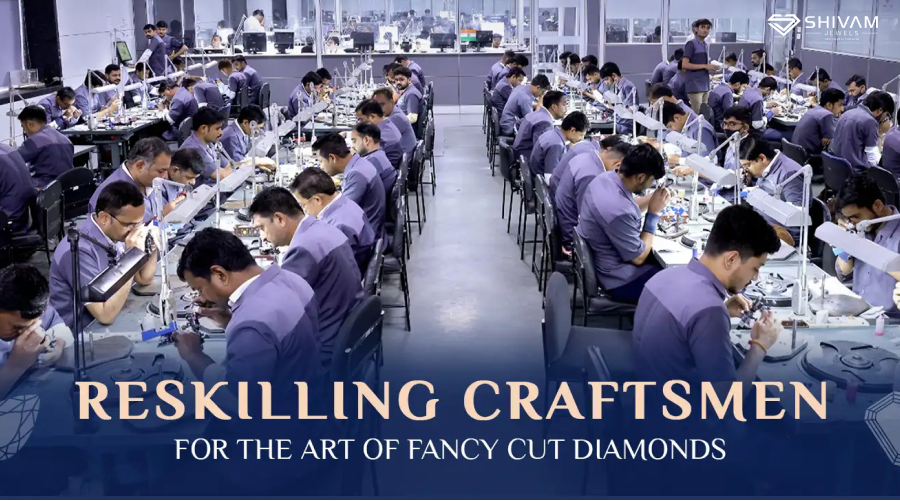
Over the years natural diamond trends in cuts have shifted significantly—from the classic round cuts that once dominated the market to the diverse range of fancy shapes that are now at the forefront of consumer demand.
This shift in market trends has necessitated the adoption of new tools and techniques as well as a continuous investment in the reskilling of our artisans. At Shivam Jewels, we believe that the true potential of a rough diamond is brought to life by the skilled hands and minds of the craftsmen who shape our diamonds.
We've wholeheartedly embraced this shift dedicating over 63% of our diamond inventory to fancy shapes—marking a substantial increase of 37% within two years.
While the classic round-cut diamond continues to be cherished for its precision and well-defined standards, the world of fancy-cut diamonds opens up a world full of creativity and complexity. This blog explores the challenges and training processes that are essential for our artisans to excel in creating ‘Fine-Cut’ fancy diamonds, a defining characteristic of our brand.
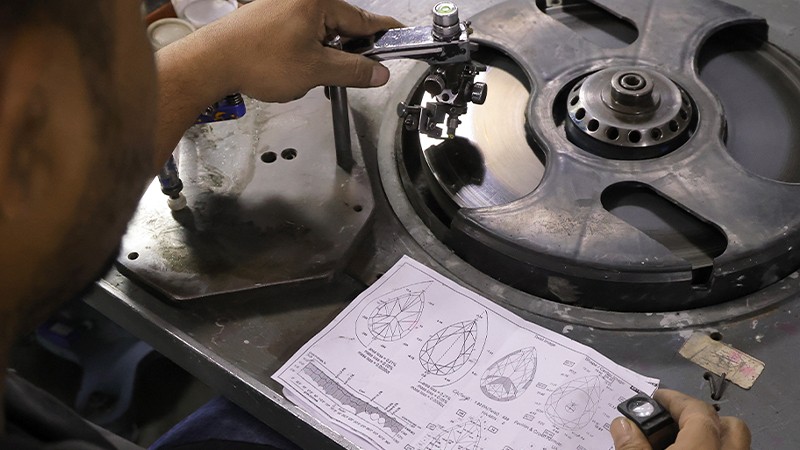
When our artisans who have mastered the art of crafting triple X round diamonds transition to the diverse world of fancy shapes, they encounter a significant shift for which they need to undergo in-depth training to master the intricacies of fancy shapes.
Moving from the uniformity of round cuts to the unique contours of fancy cuts requires a completely different skill set from the initial planning stages to the final polish. These fancy shapes are not just different in form but also demand both precise technical ability and a creative eye.
Unlike round diamonds, fancy shapes act as a blank canvas where the balance and precision of each facet—size, angle, and design—critically affect the overall beauty and symmetry of the stone. This flexibility opens up possibilities for creativity but also introduces complexity into the cutting process.

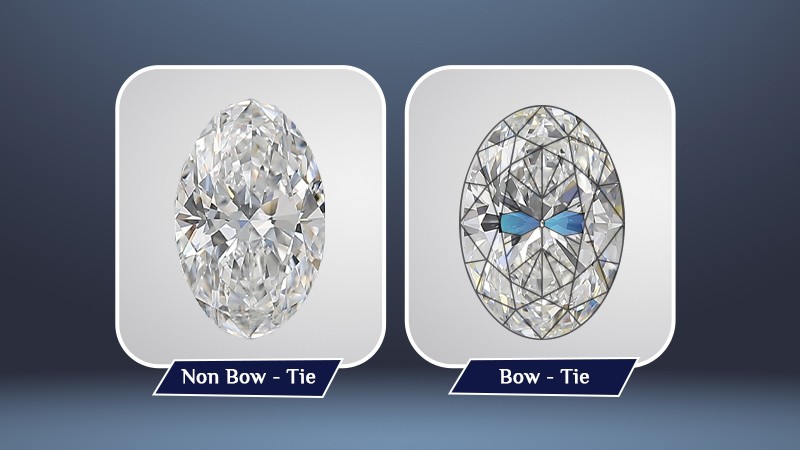
Furthermore, the variability in facet arrangements means that a cutter must adapt their approach for each specific shape. Unlike the uniformity of the triple X round where the goal is to maximize symmetry and brilliance through a standardized facet pattern, fancy shapes offer a broader spectrum of possibilities and considerations. The cutter's ability to interpret and implement the unique facet diagrams for each shape is crucial in transforming a rough stone into a beautifully polished diamond that meets high aesthetic standards.
The training of our artisans includes extensive hands-on practice and mentorship to develop the necessary skills and judgment to navigate these complexities. Our artisans begin their journey with a strong foundation, learning the theoretical diagrams of each shape thoroughly to grasp the intricate details involved. This comprehensive approach ensures our artisans understand the unique challenges and aesthetic demands of each fancy cut, enabling them to expand their craftsmanship and innovate Shivam Jewels' product offerings.
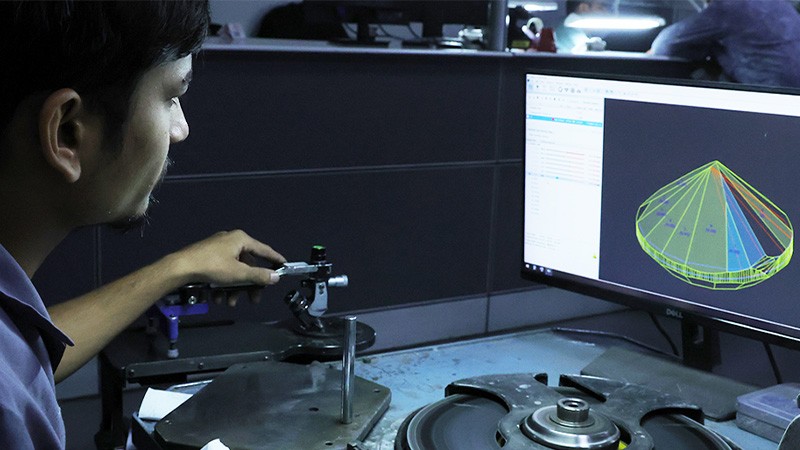
Traditional cutting methods for round diamonds provide a strong foundation, yet they require adaptation for fancy cuts. Our artisans, as they master the diagrams of intricate shapes, learn to adjust facet sizes and angles precisely, ensuring optimal balance and aesthetic appeal.
Fancy cuts present unique challenges due to their numerous pointed edges and facets. For example, the 'knock' on a pear-shaped diamond needs careful polishing to maintain proportionality as slight errors can necessitate significant reworks, reducing both the diamond's weight and value.
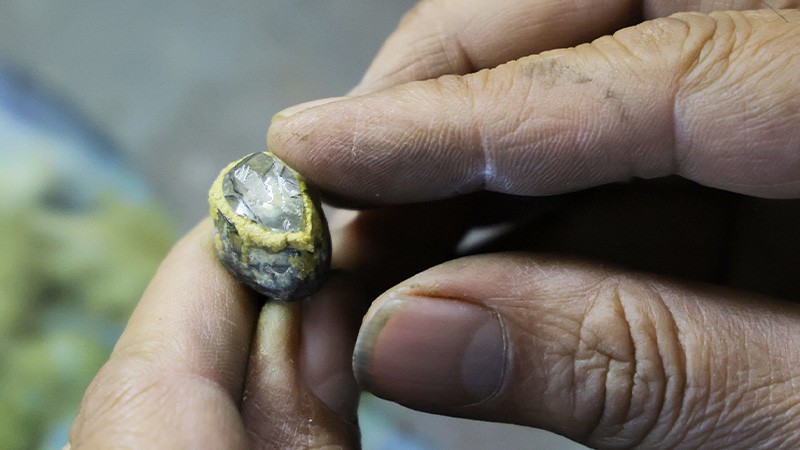
Our craftsmen's expertise extends beyond following planned cuts; they use their deep knowledge of angles and measurements to boost the stone's carat yield and brilliance. This skill is crucial in fancy cuts where understanding light play not only meets but exceeds specifications, maximizing the diamond's appeal and marketability.
The precision and skill of Shivam Jewels' craftsmen set our products apart. Their ability to manipulate light within each diamond ensures that every piece is not only visually stunning but also enhances market presence, increasing customer satisfaction.
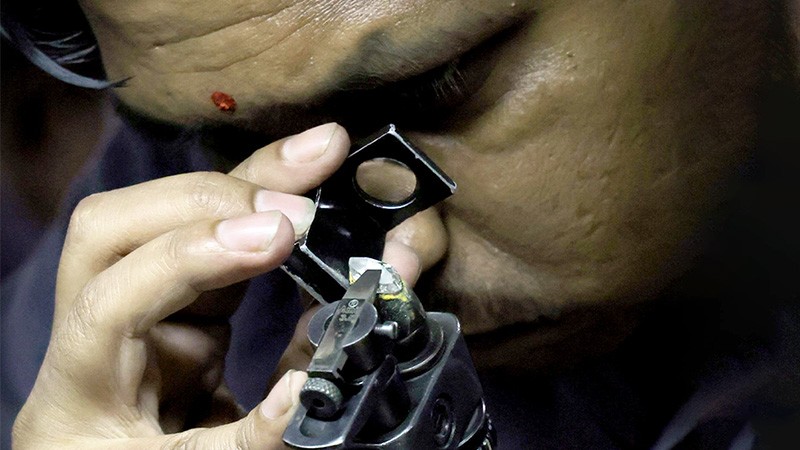
Fancy diamond shapes such as the Marquise, Princess, Pear, Cadillac, Tie, and Trapezoid present unique challenges due to their intricate and complex edges. These shapes are notably delicate at their sharp 'knock' portions, requiring meticulous handling to avoid damage that can lead to significant weight loss and require extensive rework.
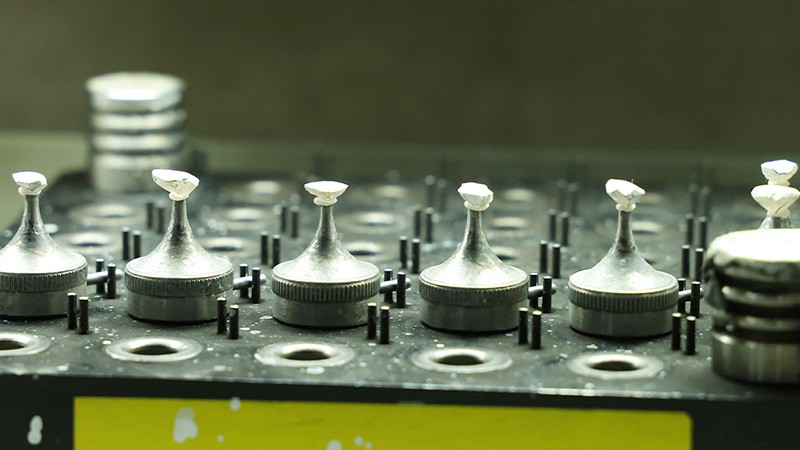
Crafting these sophisticated shapes demands a precise blend of technical skill and artistic sensibility. Our artisans are expertly trained to integrate these aspects, enhancing each stone’s natural brilliance while carefully managing its inherent vulnerabilities. This balanced approach ensures that each diamond achieves its maximum potential in both beauty and value.
Traditional methods used for round diamonds are inadequate for fancy shapes which require adaptable sawing techniques to navigate their unique contours. We continuously upgrade our machinery, equipment, and techniques to suit every new design, ensuring precision in every cut.

Each fancy shape demands a unique set of polishing tools or dops tailored to its specific angles and facets. This specialization ensures that each diamond achieves the highest standard of finish.
Our artisans undergo rigorous training to master these specialized tools and techniques. This training is crucial for crafting the finesse and precision that our fancy diamond shapes are renowned for.
Every step of the diamond cutting process from sawing and bruting to polishing is customized to highlight the distinct qualities of each fancy shape, enhancing its natural beauty and value.
While industry standards from organizations like GIA, IGI, and HRD provide clear criteria, fancy shapes introduce unique grading complications. At Shivam Jewels, our team is trained to navigate the complexities of grading these intricate shapes effectively.

The density of color and fluorescence in the knock or edge regions of fancy diamonds complicates grading as these features can obscure clarity and color when viewed under standard conditions.
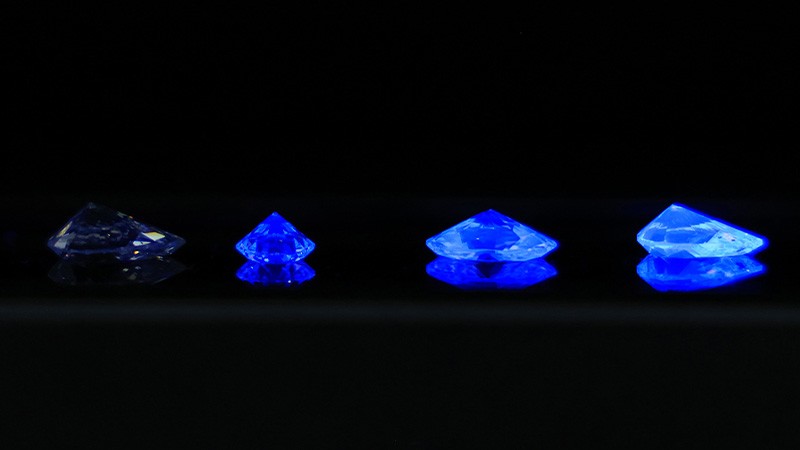
Inclusions at the knocking of a diamond are typically less visible than those on the table. This variation can make inclusions appear more pronounced in fancy cuts due to their diverse facet structures.
The unique symmetrical definitions of fancy cuts often make visual assessments more crucial than machine-based evaluations. The artisan's and grader's eye becomes an essential tool in determining the quality and overall appeal of each diamond.
As we continue to push the boundaries of diamond craftsmanship, we invite you to explore the world of Shivam Jewels where every facet captures a moment of our artisans' dedication to crafting the finest cuts. Visit us at SJ.World to discover our range of exquisitely crafted stones—from the elegant Marquise to the refined Elongated Emerald and the captivating Oval Mix Cut.
At Shivam Jewels, family is everything to us, and that's why we're super passionate about adapting our craft with the times by making sure our artisans are always up-to-speed on the latest techniques, passing down knowledge from generation to generation. Reskilling our artisans is not just a practice; it's a cornerstone of our family business's legacy, ensuring that our craftsmanship stands out in the industry.

